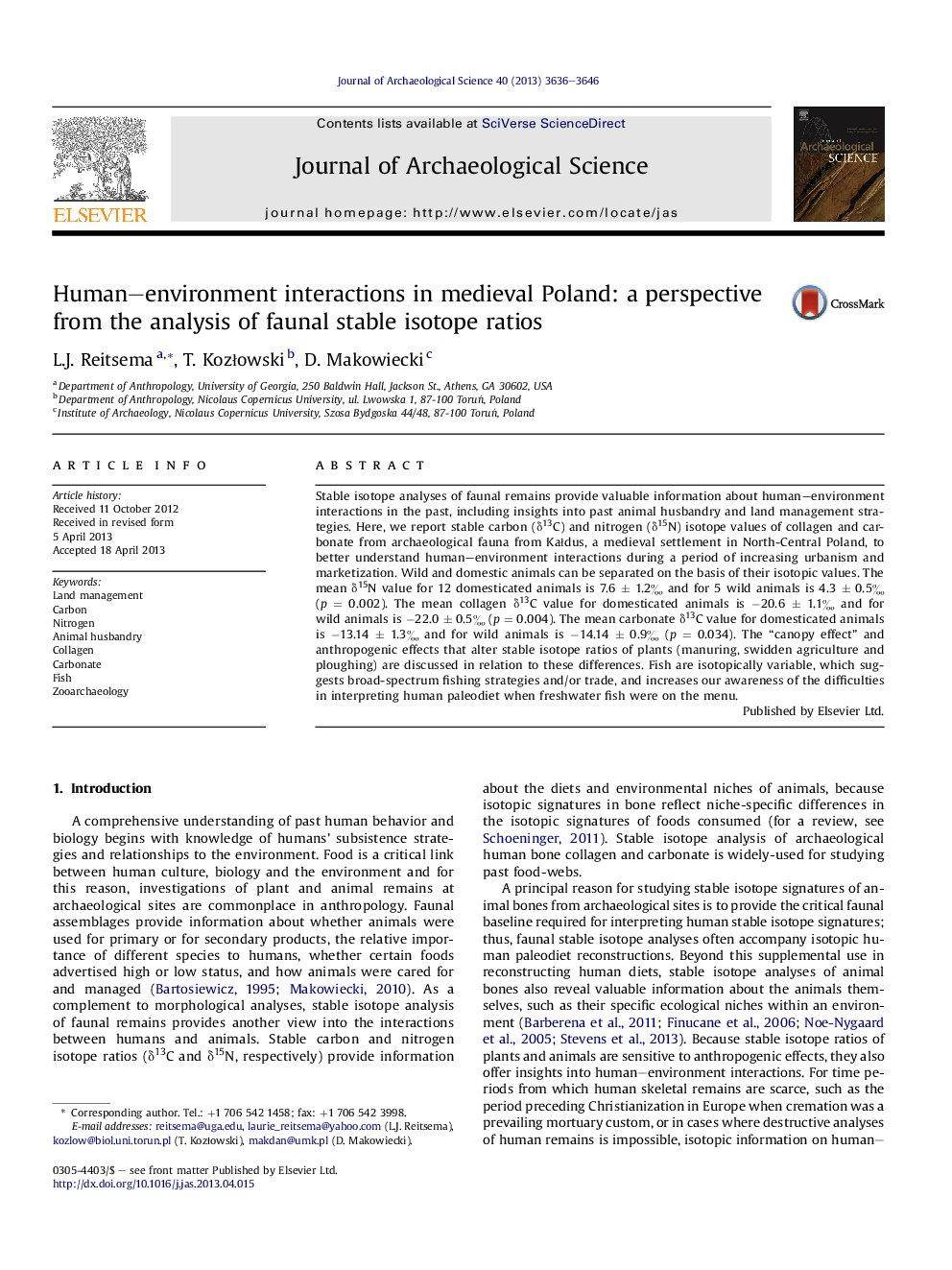| Article ID | Journal | Published Year | Pages | File Type |
|---|---|---|---|---|
| 10498904 | Journal of Archaeological Science | 2013 | 11 Pages |
Abstract
Stable isotope analyses of faunal remains provide valuable information about human-environment interactions in the past, including insights into past animal husbandry and land management strategies. Here, we report stable carbon (δ13C) and nitrogen (δ15N) isotope values of collagen and carbonate from archaeological fauna from KaÅdus, a medieval settlement in North-Central Poland, to better understand human-environment interactions during a period of increasing urbanism and marketization. Wild and domestic animals can be separated on the basis of their isotopic values. The mean δ15N value for 12 domesticated animals is 7.6 ± 1.2â° and for 5 wild animals is 4.3 ± 0.5â° (p = 0.002). The mean collagen δ13C value for domesticated animals is â20.6 ± 1.1â° and for wild animals is â22.0 ± 0.5â° (p = 0.004). The mean carbonate δ13C value for domesticated animals is â13.14 ± 1.3â° and for wild animals is â14.14 ± 0.9â° (p = 0.034). The “canopy effect” and anthropogenic effects that alter stable isotope ratios of plants (manuring, swidden agriculture and ploughing) are discussed in relation to these differences. Fish are isotopically variable, which suggests broad-spectrum fishing strategies and/or trade, and increases our awareness of the difficulties in interpreting human paleodiet when freshwater fish were on the menu.
Related Topics
Physical Sciences and Engineering
Materials Science
Materials Science (General)
Authors
L.J. Reitsema, T. KozÅowski, D. Makowiecki,
